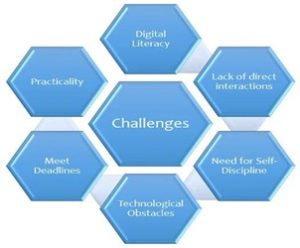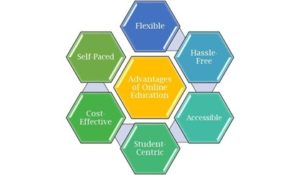Navigating the Future of Education: The Digital Revolution



Education is a cornerstone of human progress, and it has come a long way from the days of chalkboards and textbooks. The digital age has ushered in a new era of learning, and the advent of digital education is transforming the way we acquire knowledge. In this blog, we’ll explore the various facets of digital education, from online courses to interactive learning platforms, and discuss the advantages and challenges it brings to the world of academia.
Digital education, also known as e-learning or online learning, encompasses a wide range of educational methods and resources delivered via digital technology. This can include video lectures, interactive quizzes, e-books, online forums, and even virtual reality simulations. The evolution of the digital education landscape has given learners access to a world of knowledge at their fingertips, transcending geographical boundaries and time constraints. Innovations like artificial intelligence, virtual reality, and augmented reality are being integrated into learning experiences. These technologies offer exciting opportunities for more immersive and personalized education. Additionally, the COVID-19 pandemic accelerated the adoption of digital education, prompting educational institutions to invest in online infrastructure and training for educators. This shift will likely continue to shape the future of education, with blended learning models that combine in-person and digital elements becoming more prevalent. As we move forward, it’s essential to prioritize equitable access, maintain high-quality standards, and balance the advantages of digital education with the unique benefits of traditional learning.
Key Advantages of Digital Education
- Accessibility: Digital education is inclusive, allowing individuals from diverse backgrounds and locations to access educational content. This can be particularly beneficial for those with physical disabilities, students in remote areas, or people with busy schedules.
- Flexibility: Learners can have a personalized learning experience and can tailor their study schedules to fit their personal and professional commitments.
- Diverse Content: Digital platforms offer a wealth of resources and materials, ranging from traditional subjects like math and science to niche interests and vocational skills. Learners can choose from a wide variety of courses to meet their specific needs and interests.
- Interactivity: Many digital education platforms incorporate interactive elements, such as quizzes, discussion forums, and multimedia content, which can enhance engagement and understanding. Gamification techniques also make learning fun and rewarding.
- Cost-Effective: Online courses are becoming more affordable nowadays than traditional education. They eliminate expenses like commuting, housing, and physical textbooks. Additionally, many online resources are available for free, further reducing the financial burden.
Challenges and Considerations
- Technology Gaps: Not everyone has equal access to the necessary technology and internet connectivity. Bridging the digital divide is essential to ensure equitable access to education.
- Quality Control: Ensuring the quality of online education is a continuous challenge. Not all courses and providers maintain the same level of excellence. It’s crucial to have mechanisms in place for quality assurance and accreditation.
- Self-Motivation: Online learners need to be self-disciplined and motivated, as they lack the structure and accountability of a traditional classroom. Some individuals may struggle with this level of independence.
- Social Interaction: Digital education can lack the social aspect of traditional learning, which is important for personal growth and development. Efforts should be made to incorporate elements of social interaction and collaboration into digital learning environments.
By
Dr. Mayuri AVR
Senior Assistant Professor, SCSE,
Asst. Director – Digital Outreach, VIT Bhopal University.


